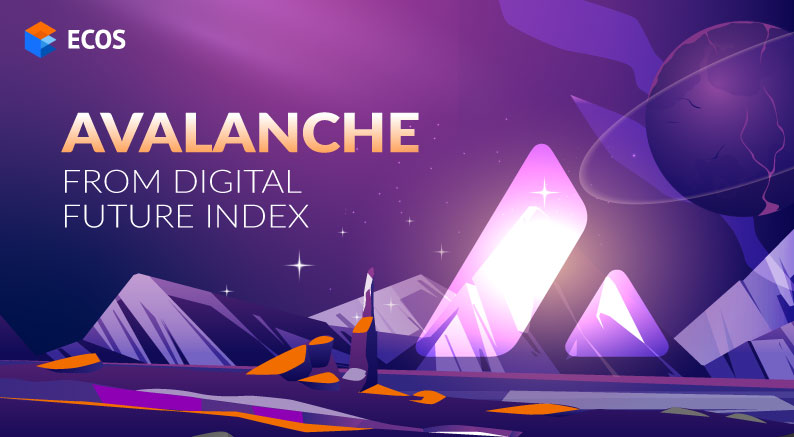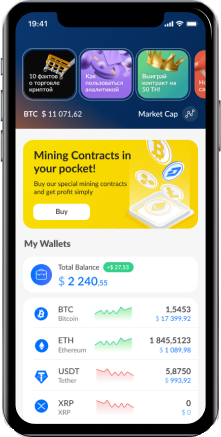Avalanche from Digital Future Index

What does the new Digital Future Index consist of?
Digital Future Index consists of promising projects that set trends in the crypto market and form the future of the WEB 3.0 economy.
Which project will we look at today?
Today we will take a detailed look at the Avalanche project and the state of its ecosystem based on the Messari report.
The Avalanche network is a Proof-of-Stake (PoS) smart contract platform for decentralized applications. Avalanche is distinguished by the creation and implementation of a new consensus family known as Avalanche consensus. After several years of research, the main Avalanche network was launched in September 2020 with all three Avalanche chains (chains P, X and C)
In March 2020, the AVA code base for the Avalanche consensus protocol became publicly available with open source code.
How is AVAX used?
In addition to satisfying the complex requirements of the financial industry, Avalanche aims for three broad use cases:
- Creating application-specific blockchains covering permitted (private) and unpermitted (public) deployments.
- Creating and running scalable and decentralized applications (Dapps). –
Creation of arbitrarily complex digital assets with custom rules, conventions and riders (smart assets).
Avalanche’s initial coin offering ended on 15 July 2020, followed by the launch of the core network in September the same year. The protocol also launched a native AVAX token (an acronym for ‘Avalanche’) in September 2020. Ultimately, Avalanche is designed to be a high-performance, scalable, customizable and secure blockchain platform.
Avalanche recorded record-high levels of active addresses, transactions, TVL and market capitalization in the fourth quarter of 2021 through incentive campaigns and network partnerships.
One of the defining moments of 2021 was the growth of alternative layer 1 smart contract platforms, which began to take market share away from industry leader Ethereum. Due to Ethereum’s overloaded network and slow deployment of layer 2 scaling solutions, the new layer 1 platform were able to offer better support to the broader user base. With the launch of the core network in late 2020, Avalanche was in the right place at the right time to welcome new entrants to its economy.
In the third quarter, Avalanche had an average of around 10,000 active addresses per day and then saw exponential growth during the fourth quarter, averaging around 70,000 active addresses per day.
The fourth quarter was a growth quarter for the crypto market as a whole, with aggregate TVL increasing by 40% to $240 billion. TVL Avalanche grew at the fastest rate among competitors in the Layer-1 and Layer-2 network categories (TVL dominance +2.75%).
The Avalanche network is quite decentralized compared to the competitors.
The number of delegators consistently exceeds the number of validators, which is in line with other PoS networks that support their own delegation. The number of autonomous validators increased slightly in December, but by the end of the month, it was back to the three-month average.
What is the Nakamoto coefficient?
The Nakamoto coefficient is a metric first introduced by Balaji Srinivasan to quantify the decentralization of blockchain networks. The number itself represents the minimum number of participants that can collude to disrupt the network. For Avalanche, the Nakamoto coefficient is equal to the number of validators who control ⅓ of the network. Avalanche’s Nakamoto coefficient hovered around 30 at the beginning of 2021 but dropped to 25 in June. After this drop, the ratio has remained relatively stable in the upper 20s, which puts Avalanche above the industry average for other network layers of 1.
Another area of focus for Avalanche is expected to be sub-network development. Avalanche will continue to develop flexible and customizable sub-networks to enable individuals and institutions to build their own blockchains tailored to their needs and to more effectively go to market. An important milestone was reached in December with the launch of the Subnet-Ethereum Virtual Machine (EVM), which is a customizable virtual machine that allows users to create their own EVM-compatible blockchain. Further development in this area is eventually expected, and if successful, it could serve as another catalyst for further growth in the ecosystem.
Below you can see current projects from the Avalanche ecosystem
Through the combination of the Ethereum-Avalanche bridge and Avalanche, Rush Avalanche has been able to expand its user base and welcome new participants into its economy. As people and organizations accumulated, Avalanche recorded record quarterly highs of inactive addresses, transactions, TVL and market capitalization.
The emergence of well-known partnerships and launches such as Aave and Curve drove growth in DeFi across the network and the number of contracts deployed. The number of unique contracts deployed on the network also reached record levels during the quarter. While the fourth quarter of 2021 proved pivotal for the Avalanche ecosystem, it also saw periodic scaling issues, as evidenced by a temporary increase in transaction fees.
Avalanche has doubled in value in the past year, peaking at $145, and AVAX is currently trading at $89.
Avalanche looks very promising, but it should be understood that much depends on the level of price at which the portfolio will be formed.






